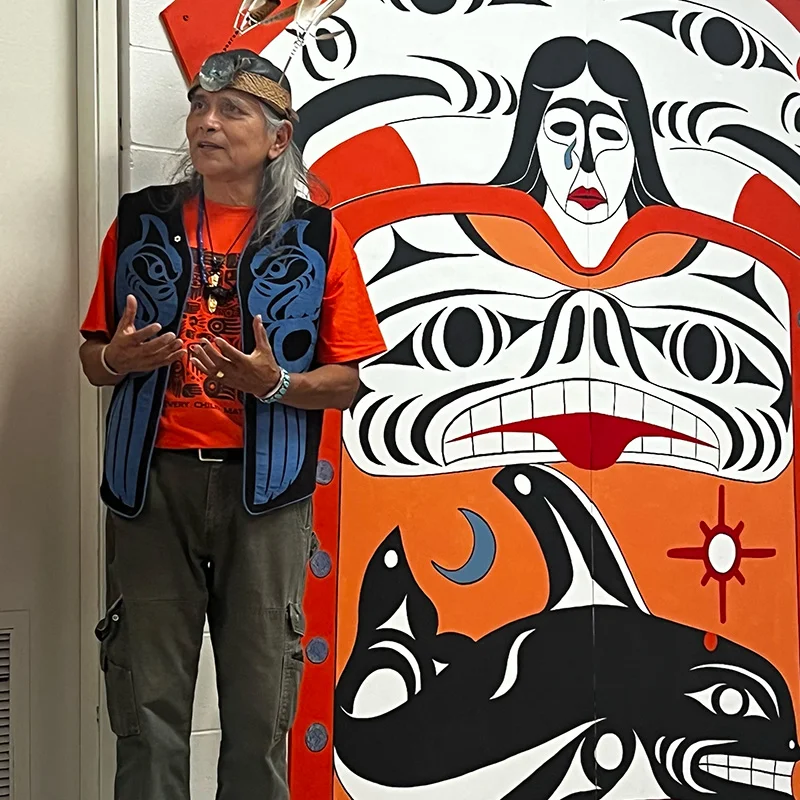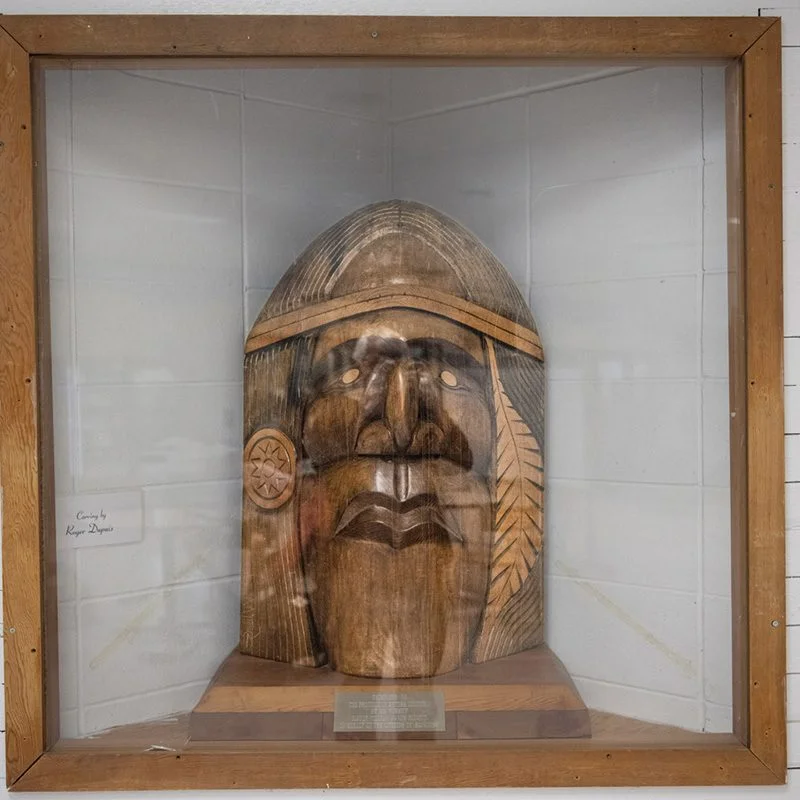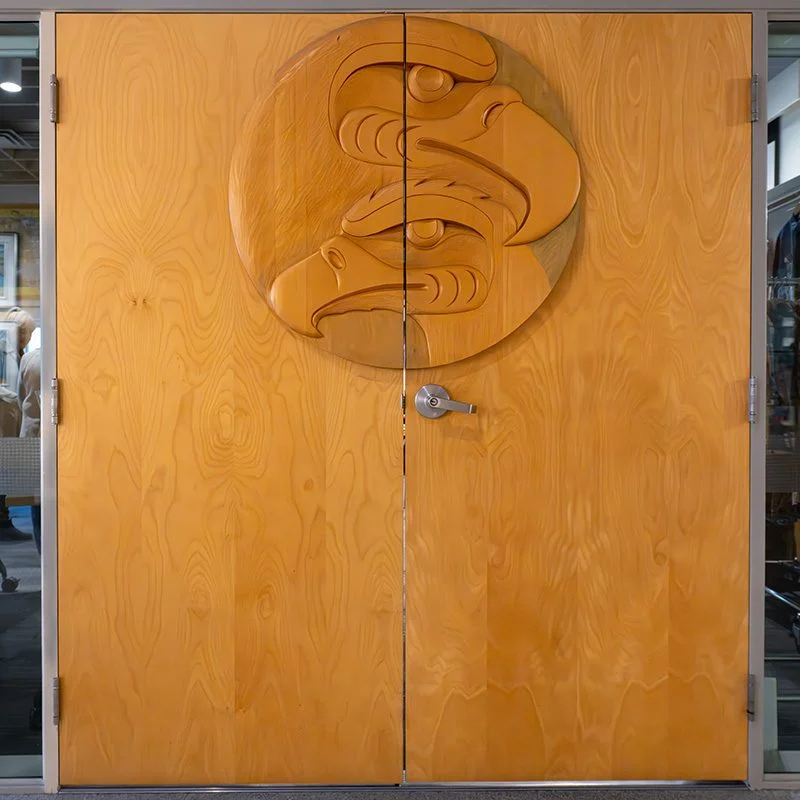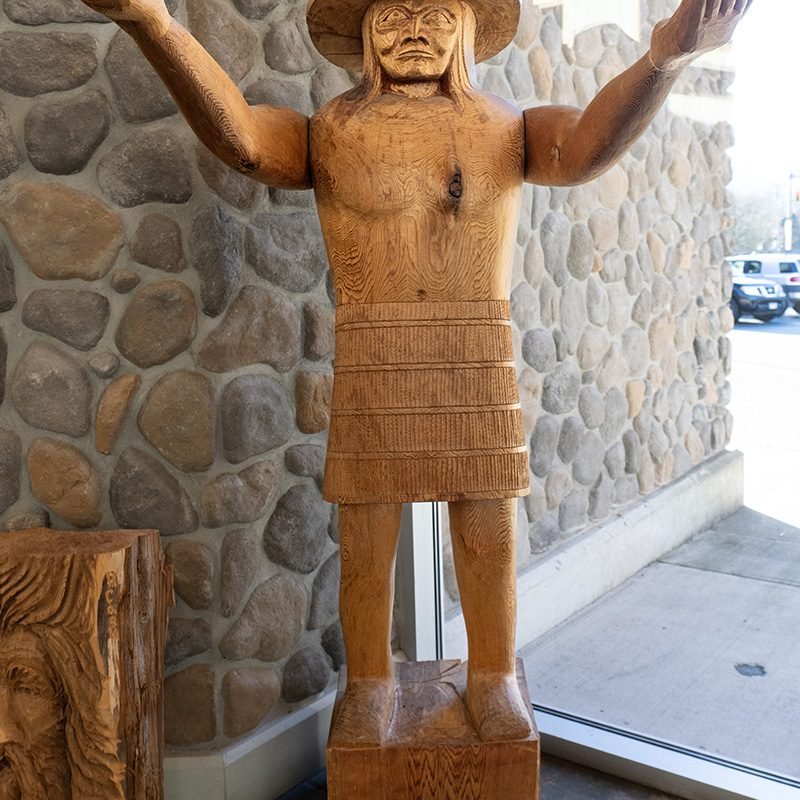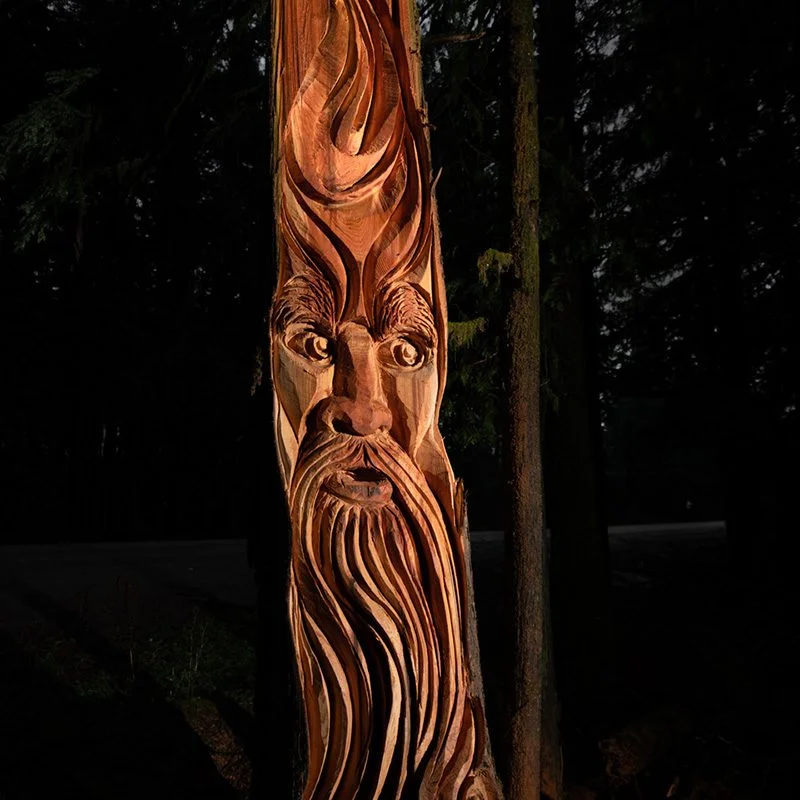Xwalacktun, also known as Rick Harry, is a descendant of Squamish and Kwakwak’wakw ancestry. He creates native art that bridges the past, present, and future, echoing the traditions of his ancestors. With a deep spiritual connection, he collaborates with clients to infuse each piece with personal narratives, breathing life into his creations.
Specializing in Coast Salish style, Xwalacktun seamlessly blends tradition with contemporary expression, catering to a diverse clientele from individuals to corporations. His artworks transcend decoration, becoming cherished treasures and iconic landmarks.
He has adorned prestigious locations with his commissioned works, from intricately carved doors at B.C. Hydro and the University of Victoria First People’s House to striking sculptures at the Audan Museum in Whistler. His craftsmanship has earned accolades including the Georgie Award in 2002 and the Arthur G. Hayden Medal at the 31st Annual International Bridge Conference Awards.
Driven by a commitment to excellence and cultural preservation, Xwalacktun continues to push boundaries in native art, leaving an indelible mark on both the artistic landscape and the communities he serves.
